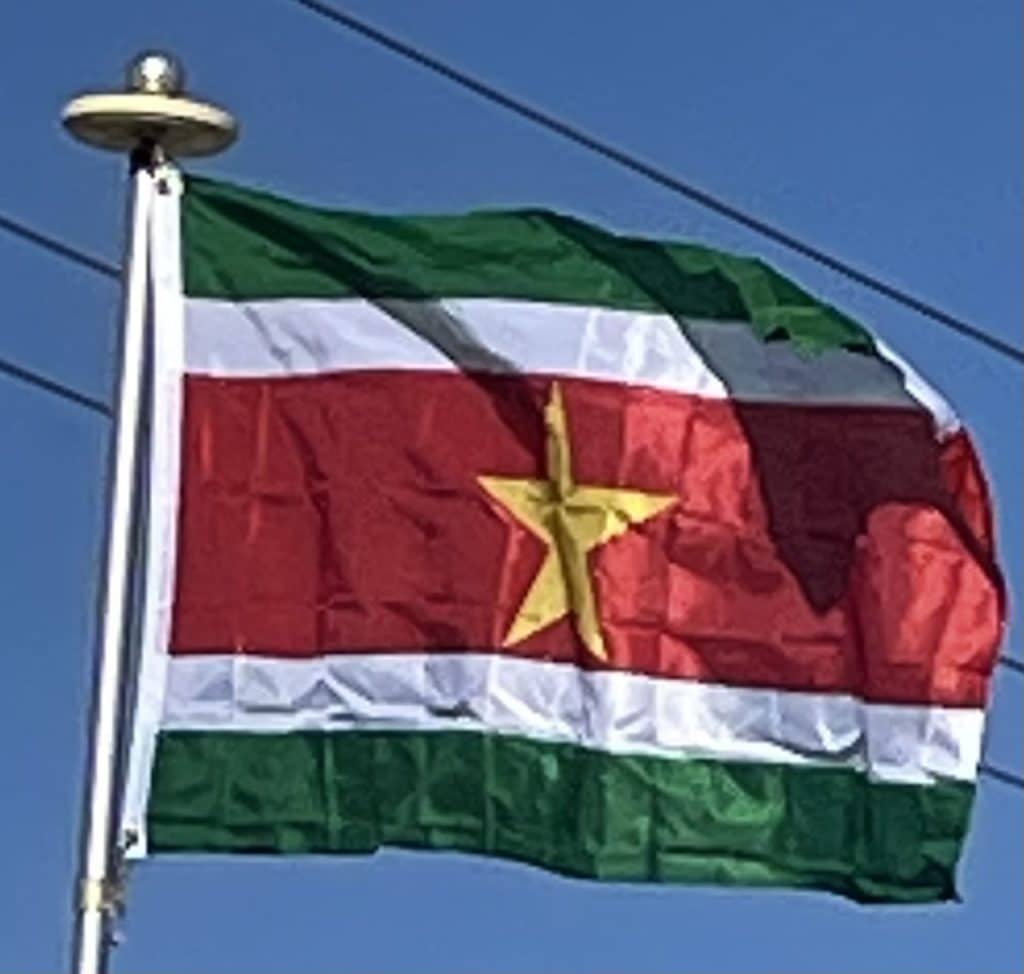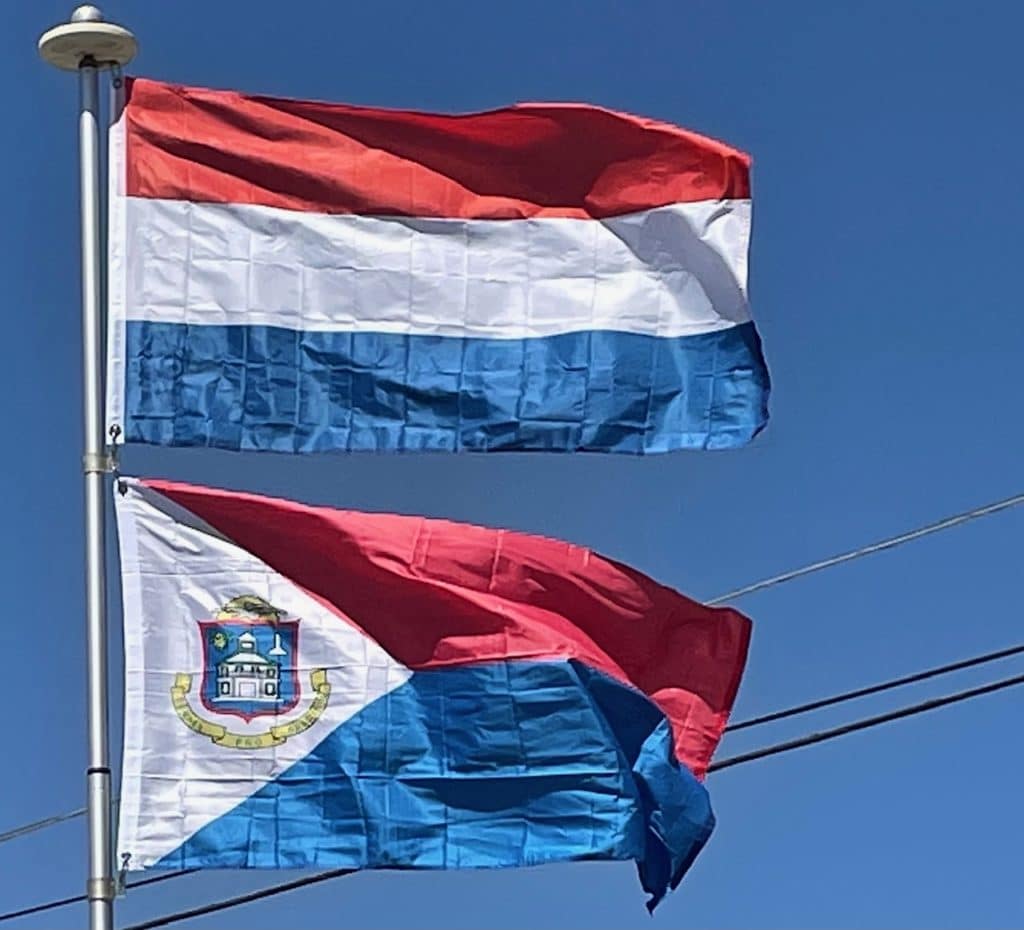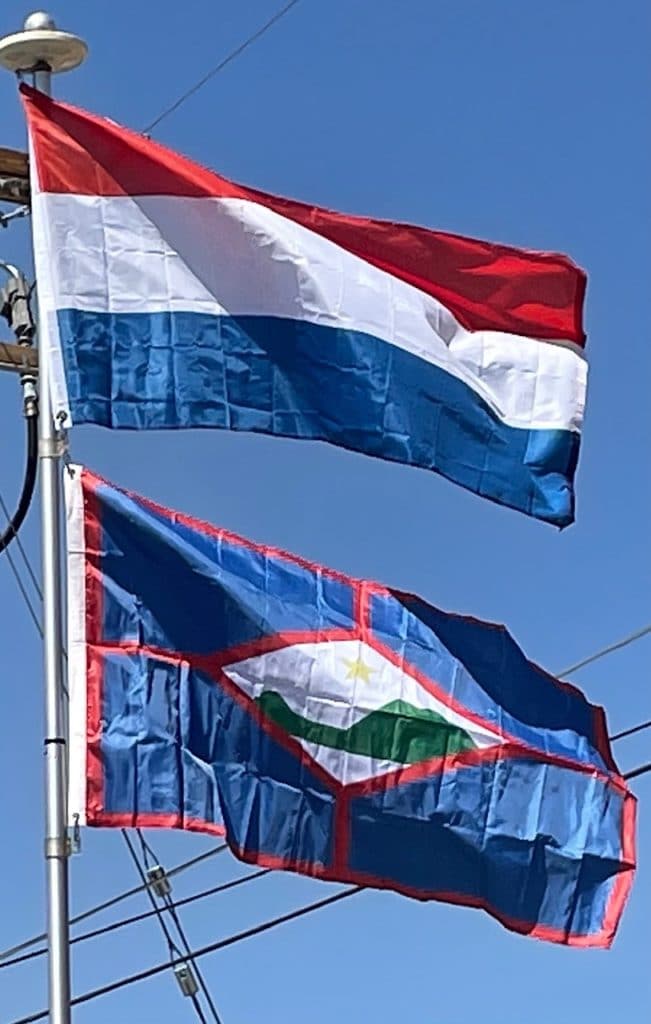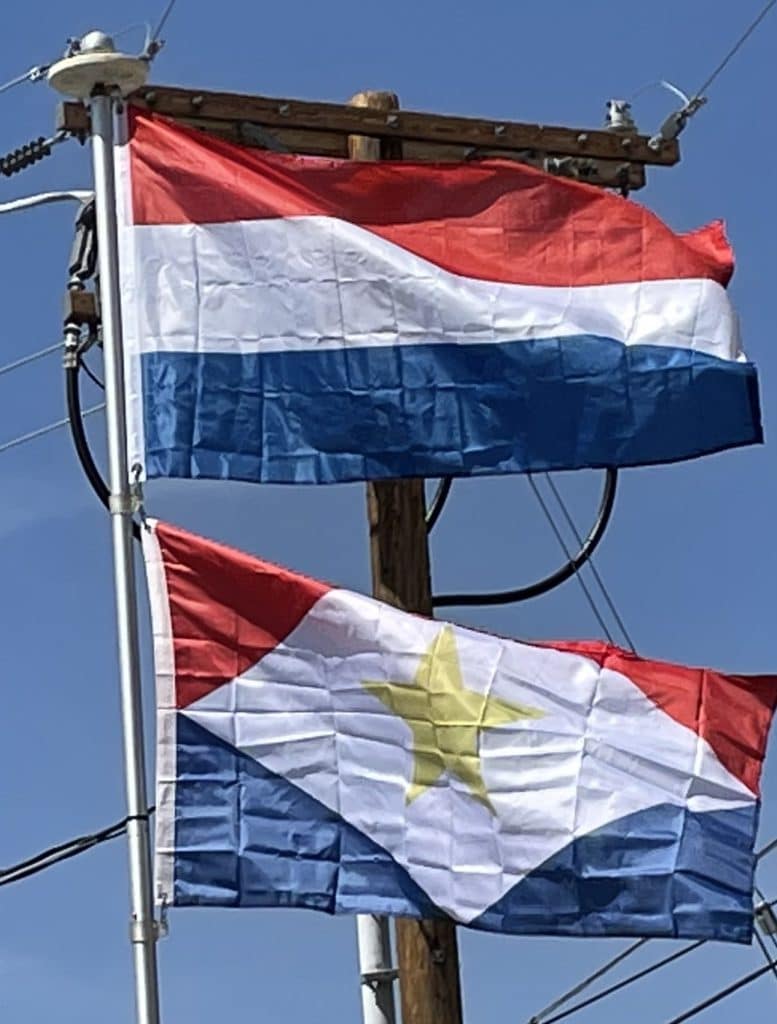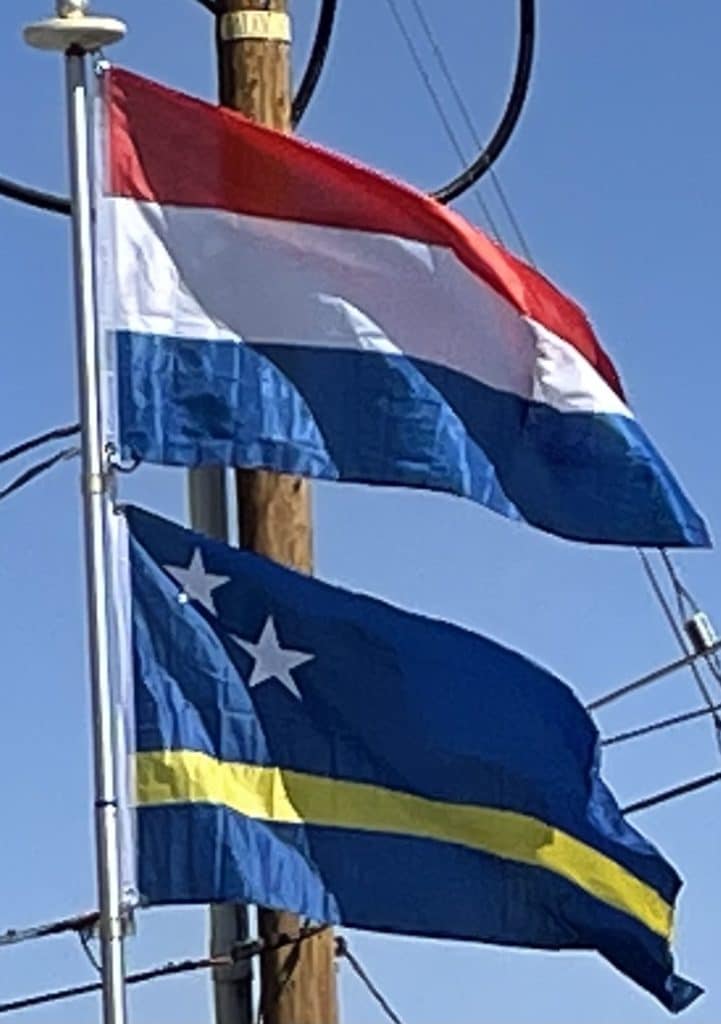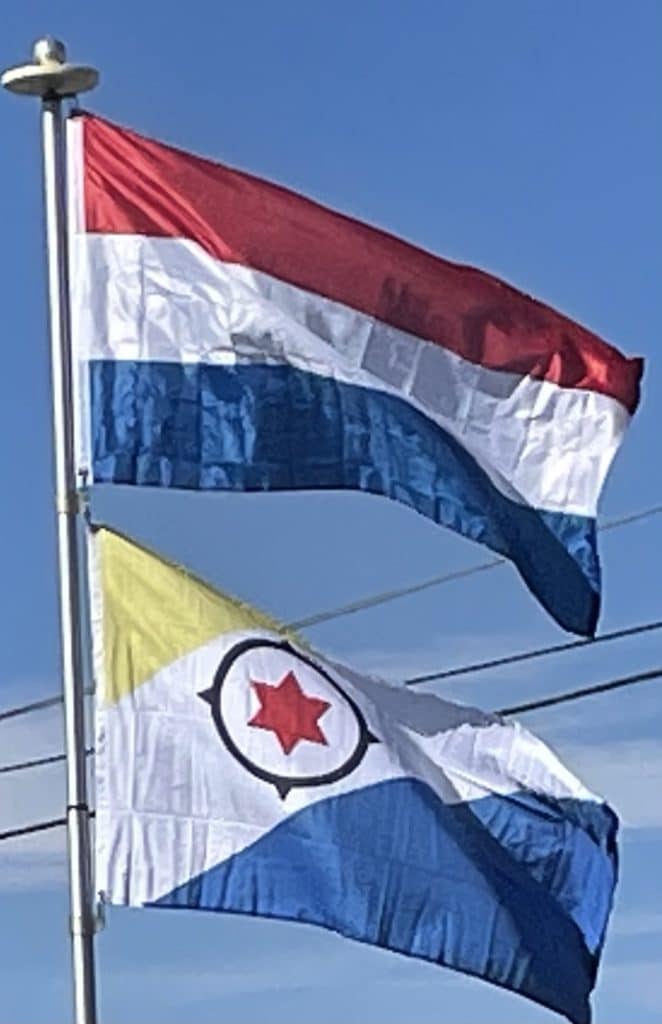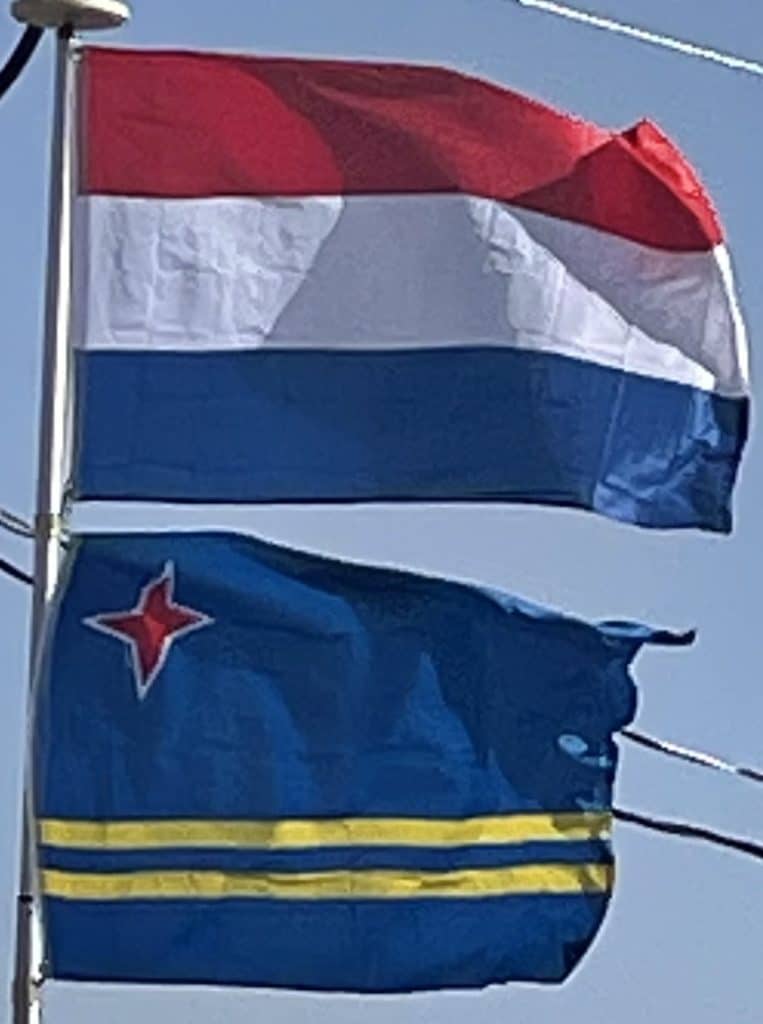Suriname
The flag of Suriname is composed of five horizontal bands of green (top, double width), white, red (quadruple width), white, and green (double width) with a large, yellow, five-pointed star in the center. The color red represents progress, white represents freedom and justice and the green represents the fertility of the land. The yellow star represents unity and a golden future
